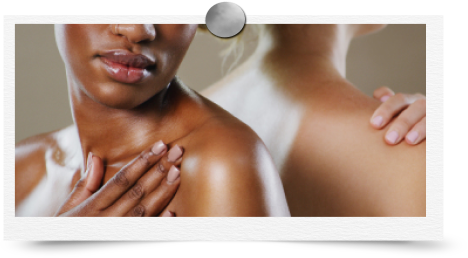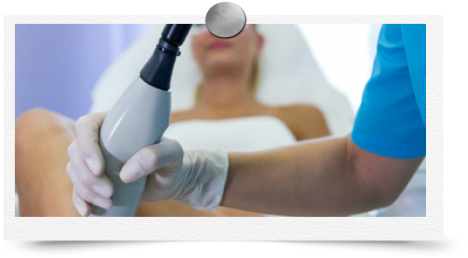In the world of skincare, both laser hair removal and chemical peels have become go-to treatments for achieving smoother skin, reducing unwanted hair, and improving overall skin texture and appearance. These treatments, when performed correctly and followed by proper aftercare, can provide outstanding results. However, there’s one vital aspect that many people often overlook during the process: avoiding the sun.
Whether you’re undergoing laser hair removal or chemical peels, sun exposure can significantly impact the success of these treatments. From causing unwanted side effects to reducing the effectiveness of your treatment, spending time in the sun after undergoing these procedures can lead to complications that may be difficult to reverse. In this blog, we’ll dive deep into why staying out of the sun is crucial during laser hair removal and chemical peel treatments, as well as the potential risks involved. By the end, you’ll understand why sun protection should be a priority when undergoing these cosmetic procedures.
Understanding the Basics of Laser Hair Removal and Chemical Peels
Before we explore the importance of avoiding the sun, let’s first briefly review what laser hair removal and chemical peels are and how they work.
Laser Hair Removal
Laser hair removal uses concentrated light energy to target and damage hair follicles, effectively reducing or eliminating hair growth in the treated area. The laser is absorbed by the pigment (melanin) in the hair, which then heats up the follicle and inhibits further hair growth. Over time, multiple sessions can result in permanent hair reduction.
There are different types of lasers used in hair removal, including Alexandrite lasers, Diode lasers, and Nd:YAG lasers, each of which targets different skin types and hair colors. Laser hair removal is commonly performed on areas like the face, legs, underarms, and bikini line.
Chemical Peels
A chemical peel is a treatment in which a chemical solution is applied to the skin to exfoliate and remove damaged outer layers. The solution causes the skin to peel off, revealing fresh, rejuvenated skin underneath. Chemical peels are often used to treat acne, sun damage, uneven skin tone, wrinkles, and hyperpigmentation.
There are three main types of chemical peels:
- Superficial Peels: These peels target the outermost layer of skin and are used for minor skin issues like mild acne, dry skin, and fine lines.
- Medium Peels: These penetrate deeper into the skin and are used for more significant issues like acne scars, moderate sun damage, and wrinkles.
- Deep Peels: These are used to treat severe skin concerns like deep wrinkles, significant sun damage, and pre-cancerous growths.
While both procedures provide exceptional benefits, the skin will be more vulnerable following either treatment, which makes sun exposure a particular concern.
Why Staying Out of the Sun Is Essential for Both Treatments
1. Increased Risk of Hyperpigmentation
One of the biggest risks of sun exposure following laser hair removal or chemical peels is the potential for hyperpigmentation—the darkening of the skin caused by an increase in melanin production. Both treatments create controlled injury to the skin, whether it’s targeting hair follicles or exfoliating the outer layer. After either procedure, the skin is more sensitive and vulnerable, and sun exposure can cause it to react negatively.
- Laser Hair Removal: During laser hair removal, the laser targets the melanin in the hair. While the laser is designed to leave surrounding skin unharmed, sun exposure increases the melanin production in the skin. As a result, if you expose the treated area to sunlight before your skin has fully healed, it may develop dark spots or hyperpigmentation where the laser was applied.
- Chemical Peels: After a chemical peel, the outer layers of the skin are exfoliated, leaving the skin more susceptible to the sun. Without the protection of the outer layer, your skin is more prone to developing dark spots or uneven pigmentation when exposed to UV rays.
These spots can be difficult to treat, and often require additional treatments to reverse. In some cases, they may be permanent. Therefore, it’s crucial to avoid the sun, especially in the days and weeks immediately following treatment, to minimize the risk of hyperpigmentation.
2. Increased Risk of Skin Damage and Burns
Another significant concern with sun exposure after laser hair removal and chemical peels is the risk of skin damage. Both treatments create temporary disruptions to the skin’s surface or deeper layers, making the skin more delicate and prone to further injury. If you expose your skin to the sun too soon after treatment, you risk developing painful sunburns, which can lead to more severe complications.
- Laser Hair Removal: While laser hair removal doesn’t damage the skin directly, it does create a temporary opening in the skin where the hair follicle is targeted. Exposing this area to the sun can cause inflammation and even second-degree burns. The skin’s ability to recover from laser treatment can also be hindered, leading to longer healing times and potential scarring.
- Chemical Peels: After a chemical peel, the skin will be particularly sensitive and vulnerable. Even mild sun exposure can result in redness, irritation, and burns. A sunburn on newly treated skin can delay healing and may result in scarring or uneven healing. This is especially true for deep chemical peels, which can leave your skin more susceptible to damage.
3. Decreased Effectiveness of the Treatment
Sun exposure not only increases the risk of pigmentation and burns but can also decrease the overall effectiveness of your treatment. Both laser hair removal and chemical peels work by stimulating skin renewal and regeneration. The goal is to promote the growth of healthy, fresh skin.
- Laser Hair Removal: When the skin is exposed to the sun after a laser treatment, the skin’s ability to heal and regenerate may be compromised. As a result, the treatment may not be as effective in preventing future hair growth or targeting the hair follicle. Moreover, sun damage can interfere with the healing process, leading to more noticeable side effects and less favorable results.
- Chemical Peels: Chemical peels rely on the shedding of damaged skin to reveal fresh, healthy skin underneath. Exposing the skin to the sun too soon after a peel may interfere with this regeneration process, preventing the treatment from achieving its full potential. Additionally, sun exposure can cause further damage to the new skin, making it more prone to scarring, discoloration, or irritation.
4. Increased Risk of Scarring
Both laser hair removal and chemical peels can result in scarring if proper aftercare is not followed. Sun exposure is one of the key factors that can increase the risk of scarring after either procedure.
- Laser Hair Removal: While laser hair removal itself is not typically associated with scarring, excessive sun exposure can lead to the formation of post-inflammatory hyperpigmentation (dark spots) or even permanent scars, particularly if the skin is burned.
- Chemical Peels: Scarring is one of the most serious risks following a chemical peel, especially if you don’t follow aftercare instructions carefully. Sun exposure can interfere with the healing process and may cause the skin to form scars, particularly if the skin becomes inflamed or irritated due to UV exposure.
5. Premature Aging of the Skin
Prolonged sun exposure is one of the leading causes of premature skin aging, contributing to the formation of wrinkles, fine lines, and sagging. After undergoing laser hair removal or a chemical peel, your skin is in a more vulnerable state and will be more prone to the harmful effects of UV rays.
- Laser Hair Removal: Excessive sun exposure after laser hair removal can accelerate the breakdown of collagen in the skin, leading to premature wrinkles and sagging. The more damage the sun causes, the harder it will be for your skin to heal, and the results of the treatment will not last as long.
- Chemical Peels: After a chemical peel, your skin is in the process of rejuvenating itself. Sun exposure during this time can slow down this process, resulting in the development of fine lines and premature aging signs. Furthermore, UV rays can increase the appearance of pigmentation, leading to uneven skin tone.
Best Practices for Sun Protection During Treatment
Now that you understand why staying out of the sun is so important, here are some sun protection tips to follow while undergoing laser hair removal or chemical peels:
- Wear Broad-Spectrum Sunscreen: Always apply a broad-spectrum sunscreen with SPF 30 or higher to treated areas. Reapply sunscreen every two hours, especially if you’re outdoors.
- Avoid Sun Exposure: As much as possible, try to stay indoors or avoid direct sunlight for at least 7-10 days after treatment. If you must go outside, wear a wide-brimmed hat, sunglasses, and protective clothing.
- Avoid Tanning Beds: Tanning beds can be just as damaging to your skin as the sun, so avoid them while undergoing treatments.
- Use Protective Clothing: In addition to sunscreen, cover treated areas with protective clothing, such as long-sleeved shirts, pants, or a scarf, to minimize exposure.
Conclusion
Both laser hair removal and chemical peels are incredibly effective treatments for improving your skin, but they come with certain precautions, especially when it comes to sun exposure. The skin is particularly vulnerable after these procedures, and sun exposure can lead to a host of complications, including hyperpigmentation, burns, scarring, and premature aging. By following proper aftercare guidelines and staying out of the sun, you can ensure that your skin heals properly and that you achieve the best possible results from your treatments.
Remember, protecting your skin from the sun isn’t just important during your treatment period—it’s a lifelong habit that can help preserve the health and beauty of your skin. So, whether you’re undergoing laser hair removal, a chemical peel, or simply working to maintain healthy skin, always prioritize sun protection. Your future self will thank you!







